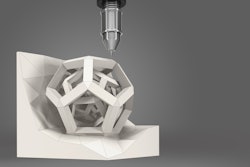The first Industrial Revolution conjures up images of grimy 19th century factories, belching smokestacks and newly mechanized production equipment. The dawn of the so-called fourth Industrial Revolution, or Industry 4.0, could not be more different and it is laying the groundwork for the Digital Enterprise. None of us will escape the impact of Industry 4.0, so it’s vital to comprehend what likely lies ahead.
The stakes are high. Consider that since 2000, 52 percent of the companies in the Fortune 500 have gone bankrupt, been acquired or ceased to exist, due largely to the disruption of traditional industry models and resources. However, manufacturing has an opportunity to harness several disruptive elements to provide service and value not possible in the past.
Manufacturers today face rising labor costs and dwindling labor pools. At the same time, collapsing product life-cycles and the rise of personalization have not only changed how individuals shop for and buy products, they are remapping every step of the production process — from supply chain logistics to inventory management.
However, although these market forces represent significant challenges as things like mass production morphs into on-demand mass customization, competitive manufacturers are already transforming these threats into assets. That’s right. Manufacturing at the speed-of-change means leveraging the latest IT, automation, workforce development and digital supply chain intelligence to create an incredibly agile digital enterprise.
Fortunately, a host of technologies are converging to enable more streamlined, cost-effective digital manufacturing models. These technologies include advanced sensors, cloud computing, intelligent automation and novel processes like 3D printing. Through robust, secure network connectivity, all of this will be brought together through advanced dashboard analytics. Ultimately, these systems will share continuous streams of data in real time to everyone in the process, from design to production and beyond. Manufacturers that successfully integrate machines, people and data will create something more powerful than the sum of their parts. Moreover, they will not only survive today’s emerging market demands, they may very well remain as the dominant digital enterprises of the future.
The Intelligent Factory
Now that sensor networks are being deployed in industry to capture and communicate data, information about machine health, component quality, process irregularities and much more can be captured continuously throughout the manufacturing process.
Functioning as a literal bridge between the physical and digital worlds, these sensors autonomously address factors that previously required direct human involvement, including measurement of material quantity and quality, adherence to process tolerances, machine health and productivity and ambient environmental conditions.
As a result, all of this information can now be analyzed, sometimes in real-time, to help customers make better decisions anywhere along the entire production cycle.
As costs plummet and services expand, cloud computing will allow digital enterprises, including manufacturing, to eliminate expensive and increasingly inadequate in-house enterprise servers and adopt “computing as a service.”
With quickly scalable storage capabilities and the ability to transmit massive amounts of digital data across geographies in real-time, Cloud services are already shaping the enterprise of the future. An IDC Manufacturing Insights study, titled “Worldwide Cloud Adoption in the Manufacturing Industry,” indicates that almost two-thirds of manufacturing firms have at least two applications residing in public or private clouds and say they will pursue “Cloud-first” or “Cloud-also” strategies in the future.
The universal, real-time perspective it allows is also scalable, allowing manufacturers to be better prepared for rapid changes in market demand. This makes tremendous sense from a cost/benefit perspective. By leveraging remote servers and IT expertise, manufacturers can free up capital for other strategic investments without the burden of time and resources to maintain an enormous IT infrastructure.
Thanks to the rapidly expanding enterprise cloud market, the ability to make sense of all the data collected from design engineers, automation sensors and other sources throughout the product’s life cycle is quickly becoming a differentiator. Most notably, making sense of this data means that manufacturing now has powerful new, real-time windows into how manufacturing operations perform, when maintenance is due and even future quality issues. Such data may even help inform future designs, features, geographic marketing and even affinity communities.
And all of these services will be led by IT leaders. In fact, in many important ways, IT provides the backbone or the foundational piece of the digital enterprise, providing a secure, efficient and widely connected information pipeline capable of delivering transformational insights to everyone along the manufacturing journey. As a result, the customer enjoys shorter time to market, increased product quality and lower costs through supply chain optimization — all because of the way manufacturing has leveraged disruption to become a truly digital enterprise.
Finally, the volume of data is driving a parallel to the Cloud’s “computing as a service” model to introduce independent “data analytics as a service” platforms. Such vendor services also save capital while providing clarity into business operations in real-time. As a result, these new decision making tools enhance product quality and helps discover new ways to grow business revenue.
How “Making Things” Will Change
The factory of the future will still be a factory. It will still be where things are made. However, advances in manufacturing today also promise to change how things are made.
Additive manufacturing, and particularly 3D Printing, have been around for decades. But they have finally evolved to the point where they are a more viable alternative for producing complex parts that couldn’t have been manufactured through traditional means.
Additive manufacturing’s primary role continues to be for rapid prototyping — sometimes as rapid as less than 48 hours. This speed has multiple benefits as manufacturers are brought earlier into the process, resulting in more effectively designed products for manufacturing. More importantly, it can help eliminate tooling, reduce costs and shorten time-to-market. As the technology becomes increasingly sophisticated, it is often capable of producing parts that can meet the performance demands of end-products in aerospace, automotive, medical and energy applications.
Of course robotics and automation — long the workhorse of the modern factory — will have an expanding role in the factory of the future. There are a number of factors driving broader adoption, starting with the changing demographics and availability of labor pools. Chasing the lowest-cost labor is no longer providing the returns it once had. As a result, many manufacturers view automation as an obvious solution for performing simple, repetitive tasks. By assigning robots to perform the most routine or hazardous tasks, manufacturers not only streamline costs but also improve the safety of their factories.
Contrary to what some may think, automation does not signal doom for employment. It is most suitable for performing simple, repetitive and often hazardous tasks, and allows manufacturers to concentrate human laborers on handling more complicated processes and thinking of the next set of advancements.
Thus, automation is not a replacement of labor, but rather an opportunity for reallocation of talent. Automation not only increases opportunities for people to move beyond the production line, it also expands overall productivity. Jabil, for example, currently employs approximately 180,000 people, but projects that number to rise even as it also exponentially expands its use of automation. As a result, the Jabil of the future will be able to produce two to three times the volume per employee headcount.
In some cases, it makes more sense to have robots that work collaboratively alongside human workers. Using machine language techniques, human workers train these people-friendly robots that can then perform a limited set of dull, repetitive tasks without needing a break.
The next step toward intelligent automation is deep learning, a branch of artificial intelligence where machines learn without the help of humans so that these robots can make decisions about a new task that they have not encountered before. Eventually, these automated robots will streamline increasingly complex processes across a manufacturer’s entire global footprint, creating a quality standard not possible through any other means.
As manufacturers expand reliance on human-robot teams, automation will become more and more transformative. In three to five years, capacity could double. In another three to five years, it could double again. The investigative stages that are being explored today by global manufacturers will be felt by the revolutionary transformations of the factories of tomorrow. This is what it means to be a digital enterprise.
The Future Factory Worker
With the further prevalence of technology throughout a digital enterprise, it is impossible to overstate its impact on human capital. As companies transition to deliver higher value, rooted in actionable insights and sensor-laden products and processes, the factory worker of the future will collaborate in a more holistic and empowered work environment. Namely, they will be counted upon to make real time, data-informed decisions rather than calling for consulting meetings with team members to discuss.
How can businesses attract and train workers that can thrive in this environment? A June 2015 report called “Rethinking the Factory” by the London-based think tank Arup, notes that “Workers will require IT and software skills in order to understand and manage more integrated processes and product development pathways. The need for specialized skills means that companies will no longer choose global locations based on low wages. Instead, offices will be based in areas where clusters of highly skilled workers reside. However, the global supply of these kinds of workers is not keeping up with demand. According to the McKinsey Global Institute’s projection, there will be a potential shortage of more than 40 million highly skilled workers worldwide by 2020.
So the challenges for tomorrow’s manufacturers are hardly disappearing. They are merely changing. But organizations that embrace these advanced technologies, that learn how to generate, manage and leverage big data, integrate automation and employees to optimize productivity and cultivate their human capital will position themselves as a truly agile, competitive force in the fast-paced marketplace of tomorrow. That’s what it will take to build a manufacturing digital enterprise.
Erich Hoch is Executive Vice President at Jabil.






















